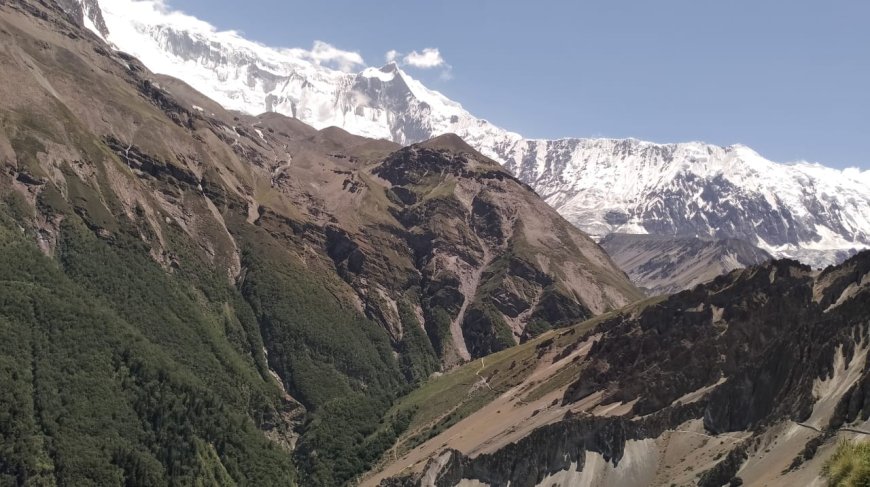How to Spot Hidden Dangers on the Annapurna Base Camp Path
Uncover hidden risks on the Annapurna Base Camp trek—from altitude sickness to weather shifts—and learn how to stay safe on Nepal’s most scenic trail.

How to Spot Hidden Dangers on the Annapurna Base Camp Path
The Annapurna Base Camp trek (ABC Trek) is one of the maximum famous trekking routes in Nepal and was first trekked by Colonel Jimmy Roberts in 1956. The trail, flanked by dense forests, crashing waterfalls, and towering peaks, is sort of a staircase into natures heart. It is the undisputedly most visually stunning trail, but The Way to ABC does have more than just scenic surprises up its sleeve. Many trekkers dismiss the route as easy compared to the high-altitude trips. This fallacy can be a fatal oversight.
Indeed, from fickle climate and moist stone steps to altitude illness and unmarked trails, the ABC path has a few hidden risks able to cause unexpected events even for the maximum experienced hikers. Those dangers arent continually visible, and a few merge with the natural environment, including the issue of predicting them.
This blog will showcase and shed some light on six commonly neglected hazards on the Annapurna Base Camp treks. And awareness of these risks is not to scare you its to empower you. With knowledge of what to watch for, learn how to be better prepared, make more informed decisions, and relax on one of Nepals most beautiful treks.
Slippery Stone Steps And Narrow Trails
One of the ABC trek's more underestimated hazards is the seemingly endless supply of stone steps often irregular, moss-covered, or wet with rain or morning dew. These steps are very slippery, especially in monsoons and in the early mornings. The passage in some places is through narrow sections along ridgelines or above deep drops, which increases the risk. One incorrect step can result in anything worse than a twisted ankle. Continuously use walking poles for stability and balance, mainly downhill. Wear footwear with suitable tread and dont rush, despite the fact that the path seems smooth. Display recognition of the terrain the Annapurna Base Camp trek is not a technical climb; however, choppy stepping on one stone can easily result in a sprain.
Altitude Illness Under 4,000 Meters
Most walkers think that altitude sickness doesnt strike till theyre above 000m, but the Annapurna Basecamp is ready at just 130m, so signs and symptoms can appear well earlier than you even get there. The symptoms and signs and symptoms we see maximum typically see are headache, nausea, dizziness, and fatigue. The hidden lure is ignoring milder symptoms and plowing on too quickly. Altitude is weird, and the outcomes range with age and fitness. To stay safe, climb slowly, drink masses of water, and take relaxation days when necessary. Carry along medication, like Diamox, if youre prone. If symptoms are getting worse, dont press on descend right away. ABC may not be Everest, but it's high enough to lead to Acute Mountain Sickness (AMS) in the unacclimatized.
Landslides and Rockfalls
The Annapurna region, which is mainly vulnerable to landslides, is presently in and right after the monsoon season. Some trail parts, especially between Chhomrong Dovan / Hinku Cave are cut out of steep slopes which are prone to soil erosion and rockfalls. Yet, such threats wont always be observable until they occur. Loose rocks can sometimes come tumbling down in silence, especially after a downpour or freezing temperatures crack the cliffs. Always heed advice from locals or official guides on recent activity, and obey any caution. Get an early start to your trek, as the slopes are strong in the morning. Do not linger while passing through high-risk zones. However pretty, one must be aware when in landslide country and pass quickly and carefully; these areas cover all but the last 20 miles of our trip.
Sudden Weather Shifts
The weather in the Himalayas may be unpredictable: clear skies can emerge as a storm within an hour or so. Distance due to which even in spring and autumn on the higher mountains it can snow. Rain becomes a hazard as it makes trails slippery and raises the possibility of landslides, and fog can cause disorientation and obscure paths. Many trekkers are caught unawares, especially the ones that dont have a guide from the local community. Sure, usually seek advice from the day-to-day forecast; however, most effective as a start line. Convey water, waterproof layers, an emergency blanket, and further garb. % intelligently, worst-case-state of affairs-smart. If clouds form or wind increases before then, seek shelter early. The beauty of Annapurna is unbridled and feral honor the mountain by being prepared for all weather.
Medical: Leeches and Insect Bites Near Rhodes in the Lower Zones
Alongside the hotter, decreased sections of the ABC trek, particularly around Nayapul and Jhinu Danda, leeches and bugs flourish, particularly during the stage in monsoon season. Those animals aren't risky inside the traditional feel, however, they could make you pretty uncomfortable, sicken you, or trigger an allergic reaction in the event that theyre no longer treated carefully. Leeches attached undiscovered and provided slow healing bites. Mosquitoes, being less invasive, are also an annoyance. Wear high socks and natural repellents, the kind with DEET is best, and check yourself for ticks. Carry antiseptic and small bandages. These pests wont exactly spoil your hike, but they can contribute to your discomfort and health. Being proactive keeps its irritation to a minimum, letting you focus on the trail.
Trail Misnavigation and Sign Misinterpretation
While the ABC path is quite hazardous and well-trodden, diversion paths, faded signs, and detours caused by landslides and seasonal changes can easily get you lost. Some signboards are contradictory or written in Nepali only. Its easy to forge down the wrong trail for hours when you are exhausted or distracted. Not just getting lost, but the time, energy, and altitude complications in the wake of getting lost. Always bring a good map, and download offline GPS apps, such as Maps. I inquire about the locals or other trekkers at every major intersection. A number of this hazard is mitigated by employing a guide. Even the prettiest course may be demanding in case youre unsure of where its taking you.
Conclusion
The Annapurna Base Camp trek is a bucket-list journey, but splendor surely masks the risk. Expertise approximately the less obvious risks, like slippery trails, altitude, weather, flowers and fauna, and a way to navigate, could make your adventure greater at ease and extra interesting. With education, recognition, and deference to nature, you may step alongside the trail without a great deal of marvel. The way to ABC is not a race to the top, its a walk of wisdom so that every view you gain is truly deserved.
How many people die going to Annapurna Base Camp?
Annapurna Base Camp death rate There is extremely low mortality in the Annapurna Base Camp (ABC) trek. ABC is a non-technical trek unlike Annapurna I, which is among the deadliest mountains. Even though there are occasional reviews of altitude sickness or landslides, dying could be very uncommon. When properly planned and informed, ABC is generally believed to be safe.
How safe is Annapurna Base Camp?
Image Annapurna Base Camp is not dangerous for healthy hikers. The path is not difficult to follow and with many walkers. But lurking risks do exist, including altitude sickness, climate change, and even landslides. Hiring a guide, trekking at the right time, and taking it gradually also allows the trek to remain secure. Thousands of people complete it every year with no problems safety has a lot to do with your preparation and your choices.
What Is the Toughest Base Camp Trek in Nepal?
The Makalu Base Camp trek is regarded as the toughest base camp trek in Nepal. It's miles remote, undeveloped, and requires lengthy days, river crossings, and excessive passes in thin air. It is a sterner challenge than those to Everest or Annapurna Base Camp, however, and requires a higher level of fitness, self-sufficiency, and mental resilience, making it Nepals toughest base camp route.
What Is the Hard Part of Annapurna?
On the trek to Annapurna Base Camp, people generally tend to locate the hardest part is the strenuous stony stair segment, especially as you are ascending towards Bamboo from Chhomrong. The ones with lengthy, lopsided ascents will make you work for each single step. If youre within the center of the Annapurna Circuit, the toughest element is crossing the Thorong La pass (5,416m), the factor wherein the skinny air, bloodless, and fatigue join forces at high elevation.






































